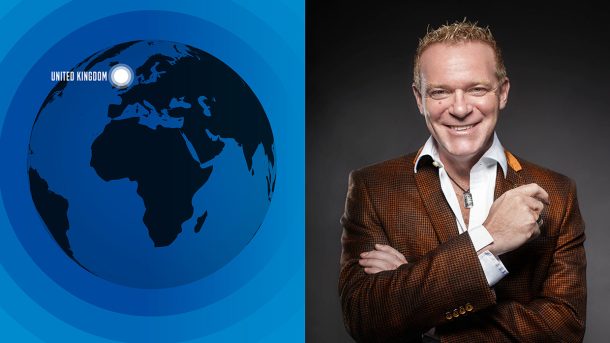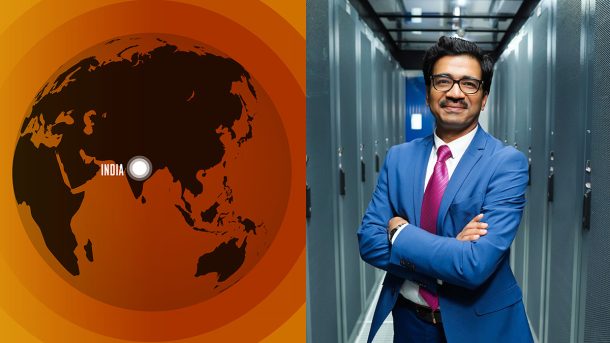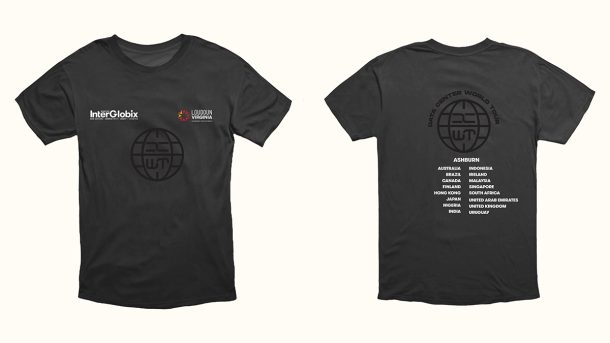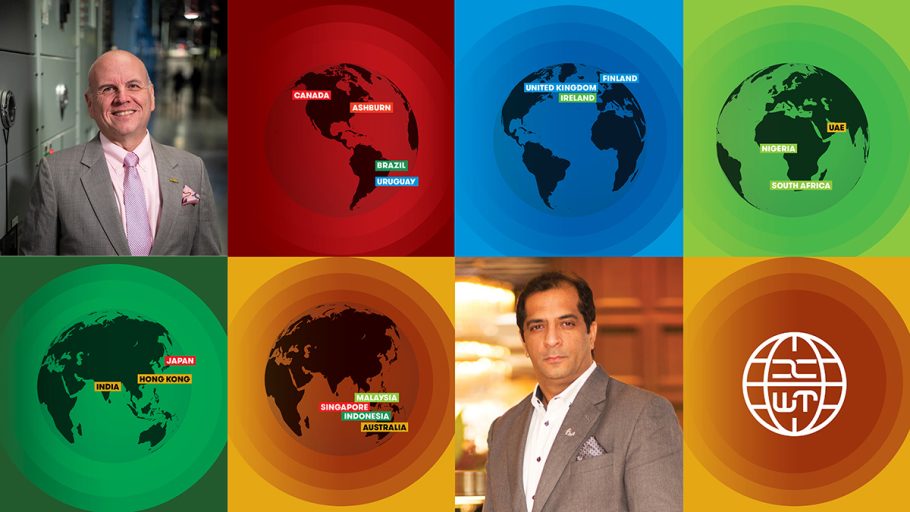Digital infrastructure is a multi-trillion-dollar industry, and it’s growing rapidly.
Over the past few years especially, we’ve witnessed countless reminders of why we’re facing an ever-increasing dependency on this industry. From staying connected through a global pandemic to ensuring continuity and commercial growth beyond it in healthcare, education, business, finance, and transportation, all sectors of society rely on reliable, secure, and high-performing digital infrastructure. While all elements of this industry are society-critical, there’s one in particular that drives our economy and fuels its development more than anything else: data centers.
In our feature story, Buddy Rizer and Vinay Nagpal provide their perspectives on the global data center landscape and interview various leaders from different parts of the world.
Even professionals with a deep understanding of the Internet may not be familiar with Sir Tim Berners-Lee. While working at a physics laboratory near Geneva, Switzerland, Berners-Lee noticed scientists were challenged to share information, so he began to brainstorm a solution. By March 1989, he laid out a vision for what he would call the “World Wide Web” in a document titled “Information Management: A Proposal.”
Many years later, the web truly is “worldwide.” Internet usage is almost universal, with adoption rates of 91 percent in North America, 87 percent in Europe, and 73 percent in Asia Pacific. Mobile phone subscription and user rates are even higher, at more than 90 percent.
From our personal lives to our business lives, data is also everywhere. The rapid growth of new architectures (e.g. cloud, edge, and Hybrid IT), new technologies (e.g. Internet of Things, machine learning), new services (e.g. in connectivity, compute, virtualization, security, storage, and applications), and new policies (on local, regional, and global scales) is creating an unprecedented demand for scalable solutions that will not only support such a massive data influx, but also enable people and businesses to leverage its power.
In order to meet this current and future worldwide demand, digital infrastructure from fiber to data centers is being built out at a rapid pace. In 2022, the global data center market was valued at 279.53 billion USD, and by 2023, this number is expected to more than double to 565.49 billion USD. Of course, even with such opportunity ripe for seizing, rapid evolution isn’t going to happen without growing pains. From a logistical standpoint, construction and maintenance costs for data centers are astronomical, and finding, retaining, and upskilling personnel can be tricky in a quickly changing environment. Furthermore, in terms of sustainability, the vast amount of electricity and cooling this infrastructure requires could raise carbon emissions in a time where reducing them is top of mind for everyone.
In an effort to understand the current situation, we spoke to data center leaders from six continents to get their input on how and why data centers are the growth engines of the digital economy—and what we can expect to see in this part of the digital infrastructure industry going forward.
 DATA CENTER WORLD TOUR: ASHBURN - It is estimated that the US data center market will reach 26 billion USD by 2027.…
DATA CENTER WORLD TOUR: ASHBURN - It is estimated that the US data center market will reach 26 billion USD by 2027.…  DATA CENTER WORLD TOUR: BRAZIL - What is the current state of the data center market in your region? Latin America is…
DATA CENTER WORLD TOUR: BRAZIL - What is the current state of the data center market in your region? Latin America is…  DATA CENTER WORLD TOUR: CANADA - What is the current state of the data center market in your region? The growth in…
DATA CENTER WORLD TOUR: CANADA - What is the current state of the data center market in your region? The growth in…  DATA CENTER WORLD TOUR: URUGUAY - What is the current state of the data center market in your region? Uruguay holds the…
DATA CENTER WORLD TOUR: URUGUAY - What is the current state of the data center market in your region? Uruguay holds the…  DATA CENTER WORLD TOUR: FINLAND - What is the current state of the data center market in your region? Currently the data…
DATA CENTER WORLD TOUR: FINLAND - What is the current state of the data center market in your region? Currently the data…  DATA CENTER WORLD TOUR: IRELAND - What is the current state of the data center market in your region? Over the past…
DATA CENTER WORLD TOUR: IRELAND - What is the current state of the data center market in your region? Over the past…  DATA CENTER WORLD TOUR: UNITED KINGDOM - What is the current state of the data center market in your region? UK and Europe’s…
DATA CENTER WORLD TOUR: UNITED KINGDOM - What is the current state of the data center market in your region? UK and Europe’s…  DATA CENTER WORLD TOUR: NIGERIA - What is the current state of the data center market in your region? Representing the largest…
DATA CENTER WORLD TOUR: NIGERIA - What is the current state of the data center market in your region? Representing the largest…  DATA CENTER WORLD TOUR: SOUTH AFRICA - What is the current state of the data center market in your region? As Internet penetration…
DATA CENTER WORLD TOUR: SOUTH AFRICA - What is the current state of the data center market in your region? As Internet penetration…  DATA CENTER WORLD TOUR: UAE - What is the current state of the data center market in your region? The data center…
DATA CENTER WORLD TOUR: UAE - What is the current state of the data center market in your region? The data center…  DATA CENTER WORLD TOUR: HONG KONG - What is the current state of the data center market in your region? The Hong Kong…
DATA CENTER WORLD TOUR: HONG KONG - What is the current state of the data center market in your region? The Hong Kong…  DATA CENTER WORLD TOUR: INDIA - What is the current state of the data center market in your region? Propelled by businesses’…
DATA CENTER WORLD TOUR: INDIA - What is the current state of the data center market in your region? Propelled by businesses’…  DATA CENTER WORLD TOUR: JAPAN - What is the current state of the data center market in your region? Japan is a…
DATA CENTER WORLD TOUR: JAPAN - What is the current state of the data center market in your region? Japan is a…  DATA CENTER WORLD TOUR: AUSTRALIA - What is the current state of the data center market in your region? Australia’s resilience in…
DATA CENTER WORLD TOUR: AUSTRALIA - What is the current state of the data center market in your region? Australia’s resilience in…  DATA CENTER WORLD TOUR: INDONESIA - What is the current state of the data center market in your region? The APAC region…
DATA CENTER WORLD TOUR: INDONESIA - What is the current state of the data center market in your region? The APAC region…  DATA CENTER WORLD TOUR: MALAYSIA - What is the current state of the data center market in your region? Johor, the Malaysian…
DATA CENTER WORLD TOUR: MALAYSIA - What is the current state of the data center market in your region? Johor, the Malaysian…  DATA CENTER WORLD TOUR: SINGAPORE - What is the current state of the data center market in your region? Data centers are…
DATA CENTER WORLD TOUR: SINGAPORE - What is the current state of the data center market in your region? Data centers are…  The Limited-Edition Data Center World Tour T-Shirt - A collaboration between InterGlobix Magazine and Loudoun County, this t-shirt celebrates the data center industry worldwide and honors…
The Limited-Edition Data Center World Tour T-Shirt - A collaboration between InterGlobix Magazine and Loudoun County, this t-shirt celebrates the data center industry worldwide and honors… ABOUT THE AUTHOR
Buddy Rizer is the Executive Director for Economic Development in Loudoun County, Virginia—home to “Data Center Alley” and recognized as the 2021 Economic Development Organization of the Year by the International Economic Development Council. Since joining the department in 2007, Rizer has led efforts that have attracted more than $65 billion in investment and over 60,000 new jobs, helping reduce the local tax rate by more than 48 cents on the dollar.
He has extensive global experience, promoting Loudoun in over 15 countries and building relationships across commercial and agricultural sectors. Rizer’s leadership has earned him numerous accolades, including being named a Tech Titan by Washingtonian Magazine eight times, one of Virginia Business Magazine’s 50 Most Influential Virginians, and a three-time member of the Washington Business Journal’s Power 100.
A 2025 recipient of the National Eagle Scout Association’s Outstanding Eagle Scout Award, Rizer also serves in multiple regional leadership roles, including Chair of the Rivana at Innovation Station CDA and board positions with NOVA, NVTC, and the Washington Airports Task Force. He holds a CEcD and EDP certification, a master’s degree from Longwood University, and is a graduate of Virginia Tech’s Local Government Management Program.
Widham has a BA in Finance from The George Washington University in Washington, DC.
Vinay Nagpal has been leading the development of digital infrastructure solutions on a global scale for over 28 years. As the president of InterGlobix and a former executive with Digital Realty, DuPont Fabros Technology, TATA Communications, Verizon Business, UUNET, CanWest Global Communications, and Intrinsyc Software, he has led global initiatives focused on the convergence of data centers, subsea fiber, and terrestrial fiber.
Nagpal is part of leadership and advisory teams for the Internet Ecosystem Innovation Committee (IEIC), the QTS Richmond NAP, Northern Virginia Technology Council (NVTC), Total Telecom Submarine Networks EMEA, DE-CIX, RTI Cables, SMU M.S. in Datacenter Systems Engineering, SubOptic, PTC and previously GPX India, LINX NoVA, and the Open-IX Association.



